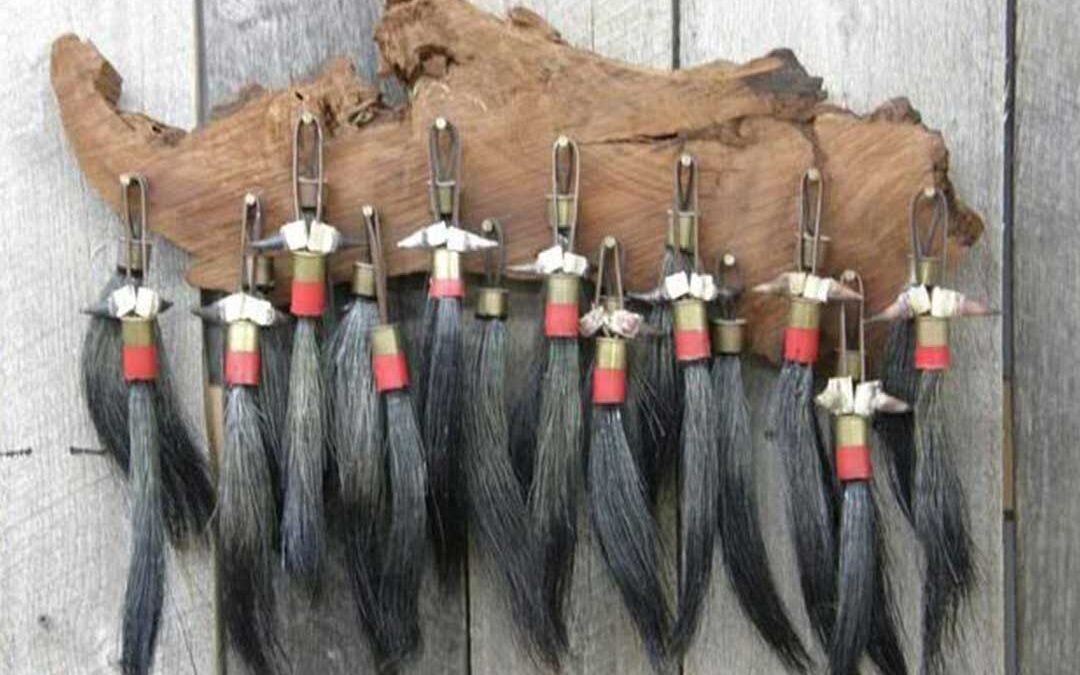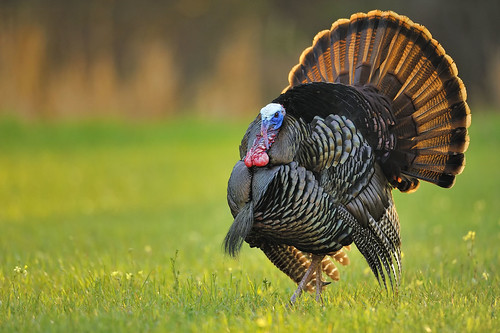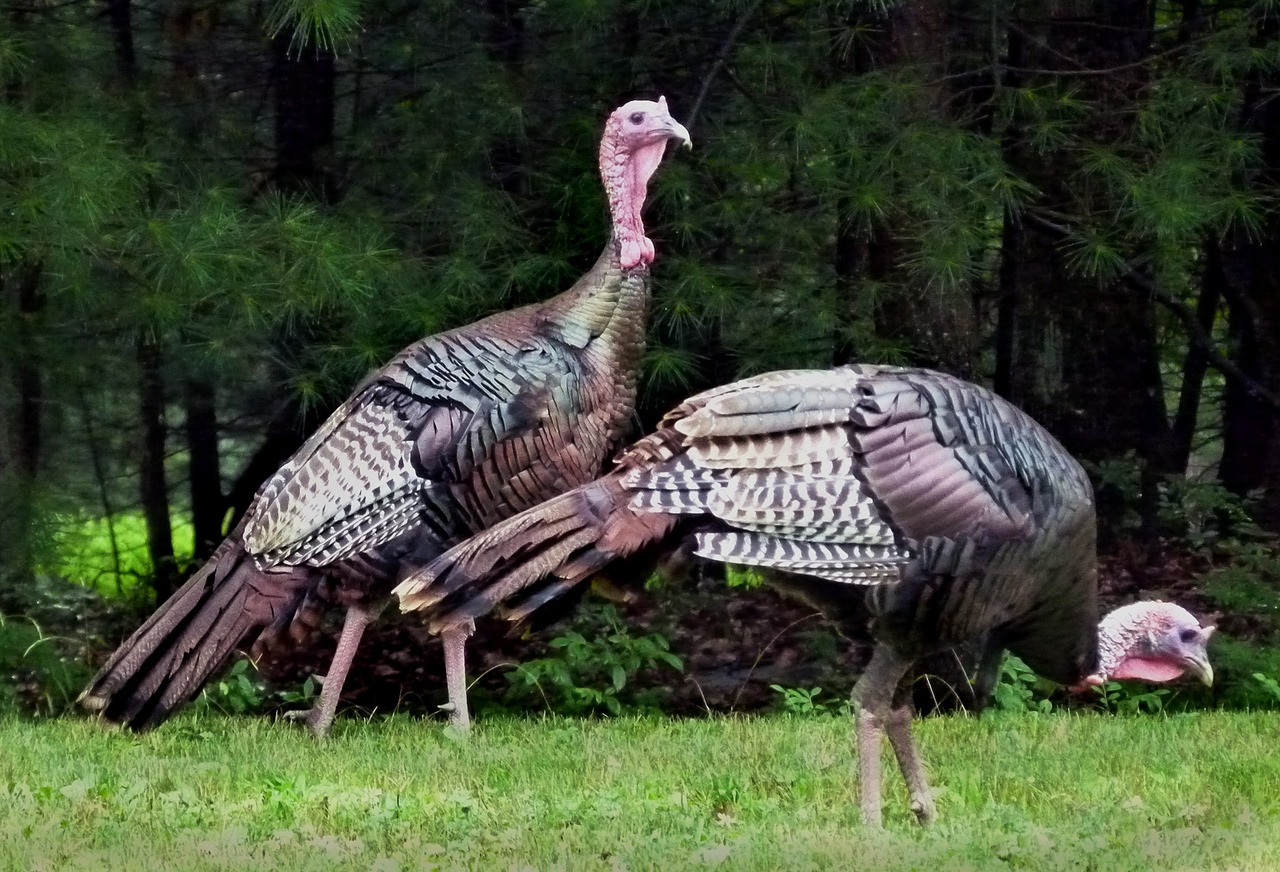Turkey beards are a meaningful memento of success in the field—one with the potential to provide ongoing pleasure limited only by your creativity.
There is a pronounced tendency among turkey hunters to consider the length and thickness of a turkey’s beard the ultimate measure of a trophy. As an old-timer once put it to me in pithy fashion: “It just ain’t so.” He was right, because spur length, more than anything else, forms the major defining hallmark of a true trophy. Spurs offer a solid indication of how well an old gobbler has weathered the vagaries which are the ongoing story of a turkey’s life, an existence defined by non-stop paranoia—something is out to “get him” all the time—and constant uncertainty. If a bird survives long enough for his spurs to achieve appreciable length and sharpness, along with taking on the graceful curve which gives us the delightful term “limb hanger,” he is undeniably a trophy. Of course for my part, never mind the predilections of others want to talk about ground-dragging beards and rapier-like spurs, any mature gobbler fairly called and cleanly killed constitutes a trophy.
In other words, “trophy” is a matter of perspective. That being duly recognized though, there’s no denying the appeal of beards. Descriptions such as “paint brush,” “ground dragger,” “Picasso,” and the like give spice to the sport’s vernacular. Beards are prey to all sorts of mishaps—breaking off because of a melanin deficiency, being afflicted by mites, becoming encrusted with snow or ice in wintery weather, getting singed or scorched as their proud possessor “bugs” in front of controlled burns, and more. Yet invariably when we kill a gobbler and stand over the bird in that special moment of bittersweet triumph, our eyes go first to the beard, then the spurs, before we heft the bird to get an idea of what it weighs.
Beards do get noticed, and they deserve special treatment, as for that matter, so do other non-edible portions of the noble bird. With that in mind, let’s look at how to handle beards, preserve them, and a few ways to utilize this strange appendage in decorative fashion.
Removing, Curing, and Preserving
The starting point is removal of the beard and treatment of it in a fashion which ensures it will last. Most hunters cut it away, but that is neither necessary nor even the preferred approach. Just grasp the beard immediately below where it attaches to the turkey’s body and give a firm pull. It will come away cleanly with minimal flesh attached. Treat and cure this fleshy part by covering it thoroughly with powdered borax. It is a good idea to rub the borax in a bit and then place the beard in a dry place until the moisture in the flesh vanishes.
 With curing complete, the greatest danger to beards comes in the form of insect damage. Such disasters can almost always be avoided by proper storage. For example, most of the beards from turkeys I have taken over the years reside in the hull of the shell used to kill them (occasionally a beard will be too thick to fit inside a 12 gauge hull). These are, in turn, stored in decorative beard boxes. I keep a few moth crystals inside these boxes, and that has kept not only moths but mites and other insects at bay. However, should you decide to use beards for decorative purposes, which we will address momentarily, some additional vigilance is required. My best advice would be to check beards incorporated into craft projects on a regular basis. Quite possibly there is a type of acrylic spray or something similar which would coat and preserve beards, although I must admit I haven’t tried this.
With curing complete, the greatest danger to beards comes in the form of insect damage. Such disasters can almost always be avoided by proper storage. For example, most of the beards from turkeys I have taken over the years reside in the hull of the shell used to kill them (occasionally a beard will be too thick to fit inside a 12 gauge hull). These are, in turn, stored in decorative beard boxes. I keep a few moth crystals inside these boxes, and that has kept not only moths but mites and other insects at bay. However, should you decide to use beards for decorative purposes, which we will address momentarily, some additional vigilance is required. My best advice would be to check beards incorporated into craft projects on a regular basis. Quite possibly there is a type of acrylic spray or something similar which would coat and preserve beards, although I must admit I haven’t tried this.
Crafting with Beards
There are all sorts of ways beards can be used in a creative and visually appealing fashion. These can be as simple as the oft-encountered string of beards adorning the wall of a gun room, study, or man cave, but that’s a mere starting point. As noted above, what I have personally done with the beards of most turkeys I’ve killed over the years is placed them inside the shotshell hull with which they were taken, along with a rolled up piece of paper describing the circumstances of the hunt, and then deposited them in beard boxes. My wife once suggested I should also place the hulls from misses in a box, but that was one of those instances where I politely ignored spousal advice. Of course when I shook my head, she rubbed salt in my wounded pride by saying: “Oh, I understand. It would take too big a box.”
Another shotshell hulls/beards combo involves using the brass portion of a hull with a beard in it. Begin by removing the rest of the hull and carefully drilling a hole through each side of the brass immediately below the rim. This is the starting point in the crafting of an unusual necklace. Next insert a chain, thin leather thong or string through the two holes, making sure to have it properly positioned in terms of the clasp or knot which will secure it. Incidentally, should you desire, decorative beads can be strung on the latter two options. Once the basic necklace design is readied, you can then turn to the piece de resistance, the beard. Try to select a long, straight one with considerable thickness. It will look better. Secure it in place using some type of hot glue squirted inside the brass to hold the beard in place and keep the hull top from sliding. Once it sets, you have a necklace which can also double as a wall hanging.
Alternatively, if you are really into the symbolism of employing materials from turkeys past as you hunt those still living, you can create a lanyard adorned with a beard along the same lines to hold a wingbone yelper. Just be sure to limit the beads to earth tones such as green and brown, while those to be worn for strictly decorative purposes might benefit from a touch of “turkey colors” brightness in the form of red, white, and blue beads.
The necklace or lanyard concept requires only a single beard, but for those fortunate enough to have killed a bunch of gobblers who want a striking multi-beard display, an idea from a longtime buddy who is a highly skilled trapper might be worthy of consideration. He took a home-made wooden frame originally fashioned for curing beaver pelts and turned it into an eye-fetching wall decoration. This was done by adorning the entire outside of the frame with evenly spaced beards, adding a number of groupings of secondary wing feathers held together by thin strips of leather and showing colorful beads. To round things off he placed a fan at the bottom of the frame. Hung on a wall in the entrance to his home, it was a thing of beauty.
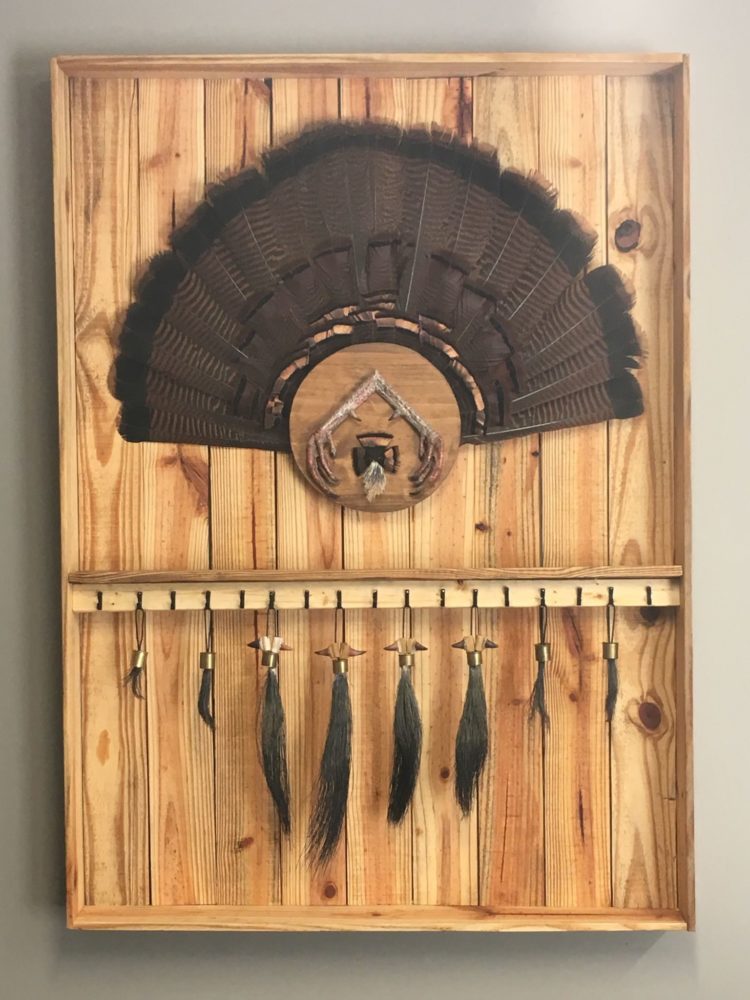 Another project, and it could be considered a sort of offshoot of the decorative frame for a pelt, would be creation of a giant-sized dream catcher. For those who prefer to stick to natural materials, thin strips of oak or hickory of the type used to craft baskets could be shaped into an oval. Use a tiny bit to drill holes in the wood at evenly spaced intervals and run monofilament fishing line through those holes to attach beards (alternatively, the beards can be glued to the wood, but they will hang more naturally if tied). Add other items as they strike your fancy—maybe some breast feathers, spurs, deer tails, or the like—and you have a piece of art from nature which will appear dream-like whether or not any dreams are captured.
Another project, and it could be considered a sort of offshoot of the decorative frame for a pelt, would be creation of a giant-sized dream catcher. For those who prefer to stick to natural materials, thin strips of oak or hickory of the type used to craft baskets could be shaped into an oval. Use a tiny bit to drill holes in the wood at evenly spaced intervals and run monofilament fishing line through those holes to attach beards (alternatively, the beards can be glued to the wood, but they will hang more naturally if tied). Add other items as they strike your fancy—maybe some breast feathers, spurs, deer tails, or the like—and you have a piece of art from nature which will appear dream-like whether or not any dreams are captured.
Beards can be worked into “natural” wreathes along with feathers, fur, nuts and nut shells, pieces of greenery (if used at Christmas), milkweed pods, balls from sweet gum trees, and similar items in a most attractive fashion. They can be displayed atop a red velvet background in shadow boxes. Hang them from a solid white or silver Christmas tree as a decorative ornament. Create a “counting coup” array of beards stretching across the wall. In short, the opportunities for bringing the beauty of beards to the forefront for visual enjoyment and fond recollection are limited only by your creativity. However you use beards though, I would strongly encourage each and every reader to save them. They are a meaningful memento of success in the field; one with the potential to provide ongoing pleasure.
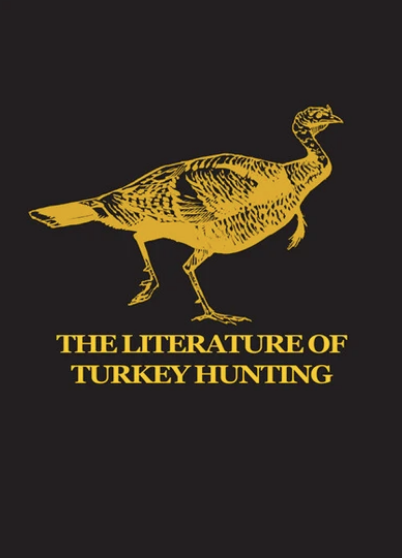 Jim Casada’s The Literature of Turkey Hunting is a critical reference source, including prices, for anyone interested in books, pamphlets, brochures and published ephemera on turkey hunting. Buy Now
Jim Casada’s The Literature of Turkey Hunting is a critical reference source, including prices, for anyone interested in books, pamphlets, brochures and published ephemera on turkey hunting. Buy Now

